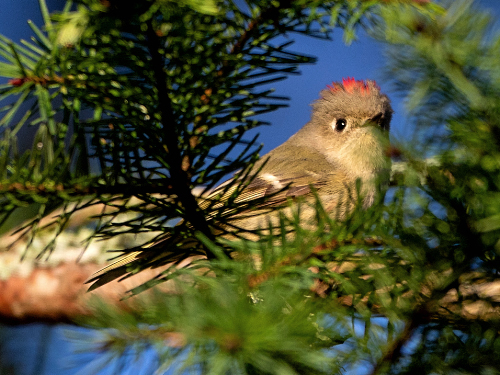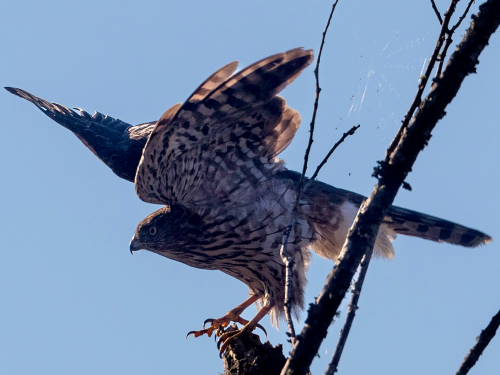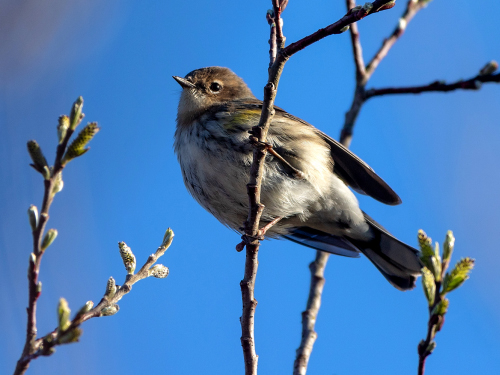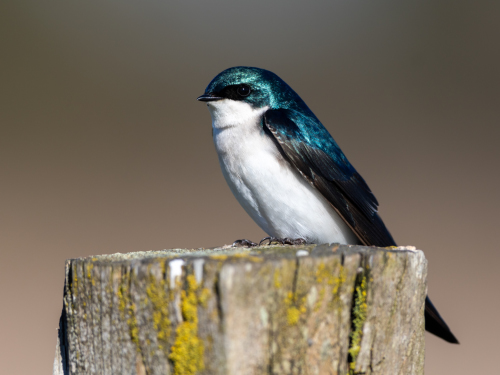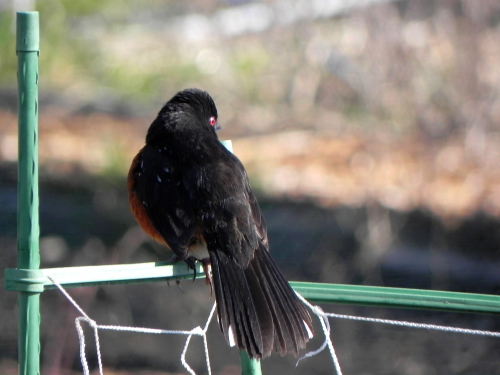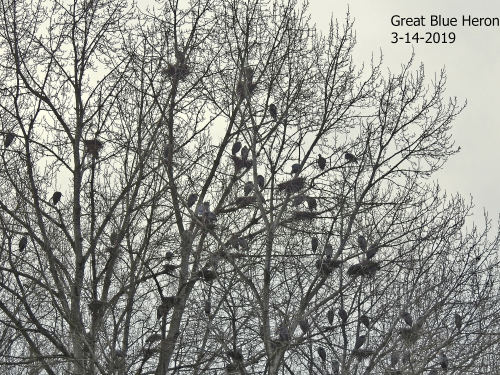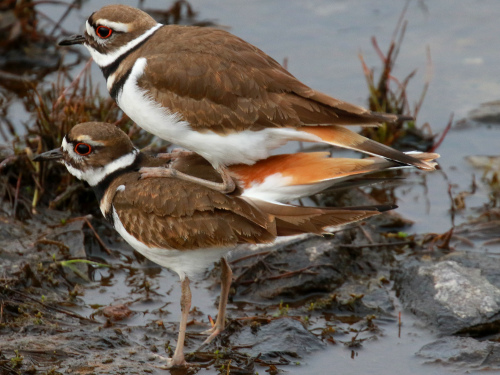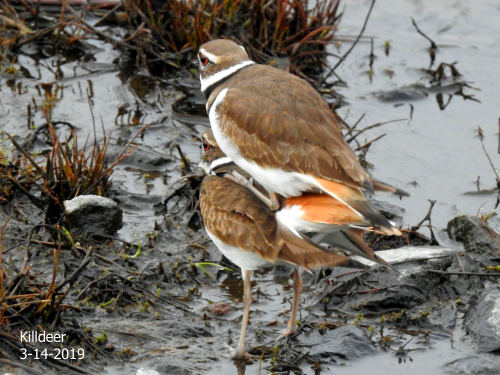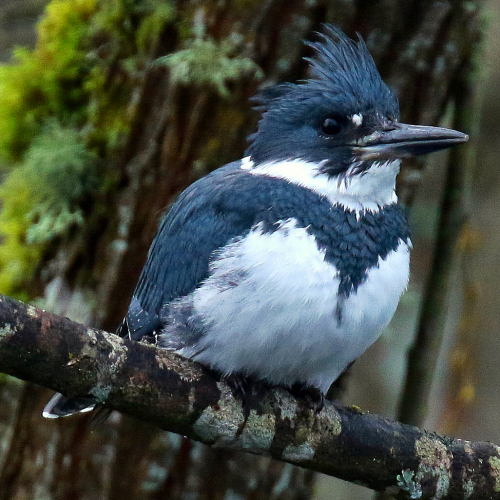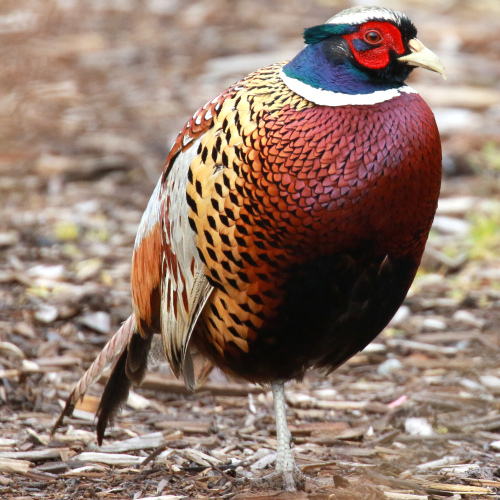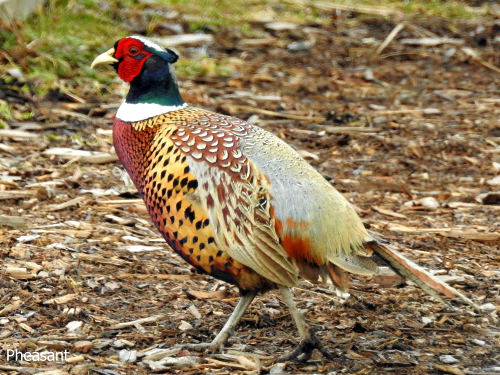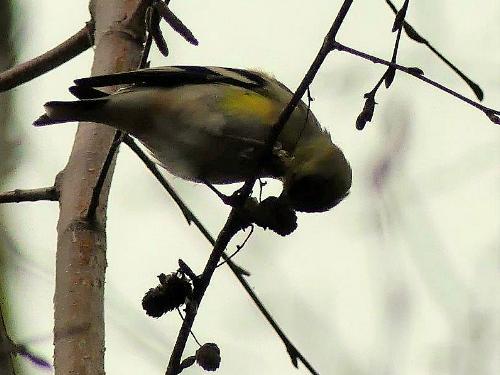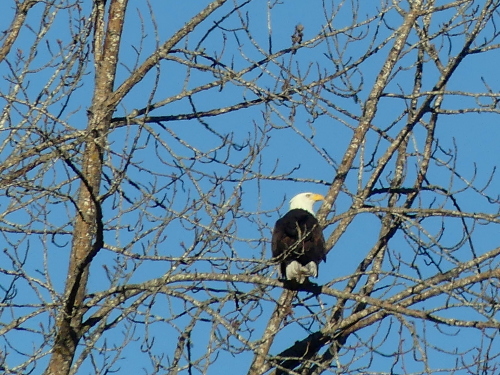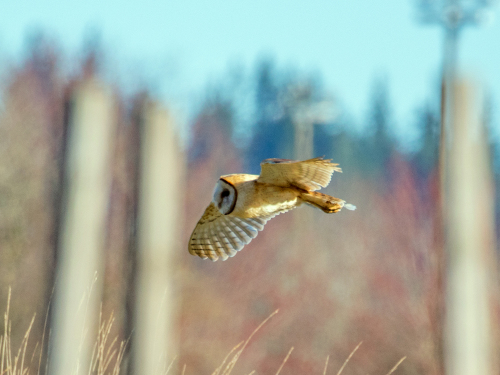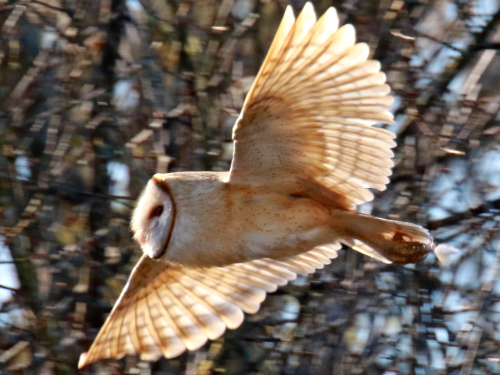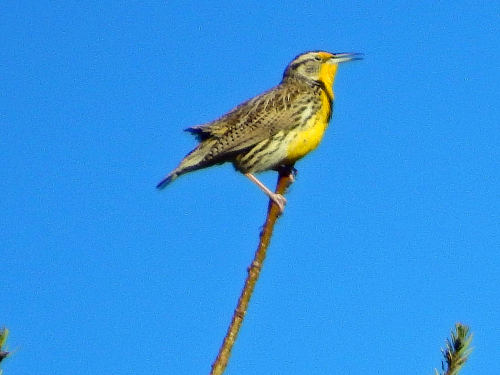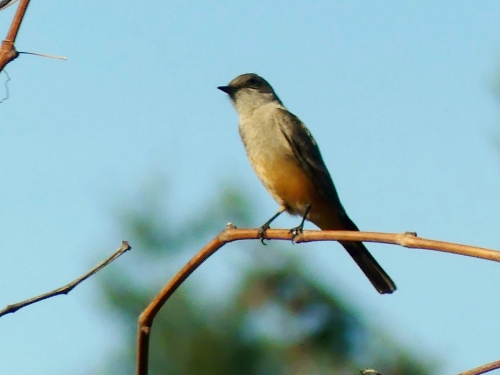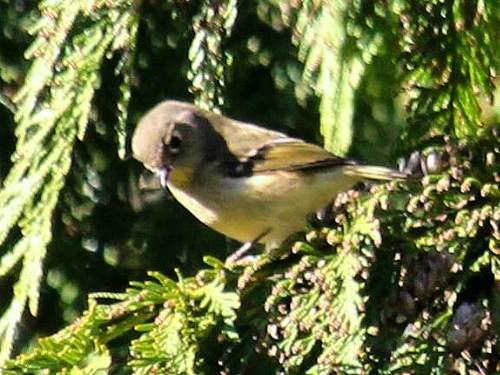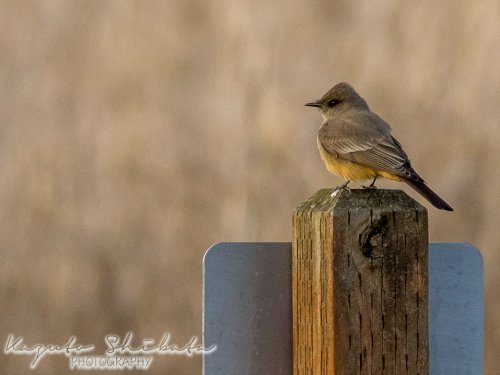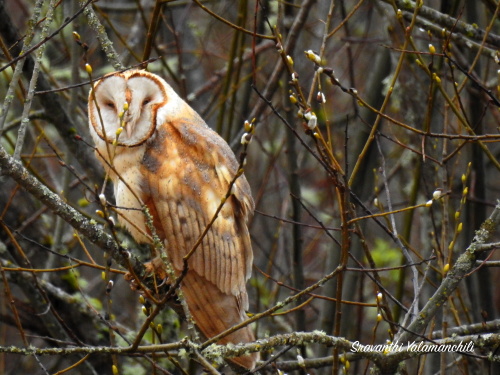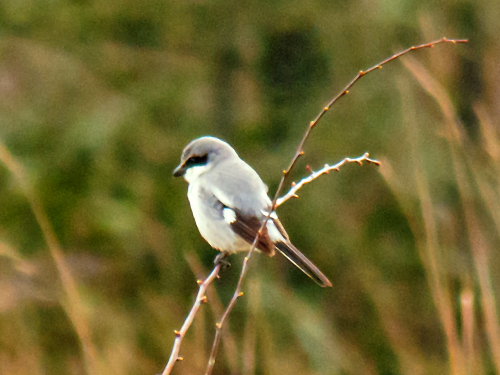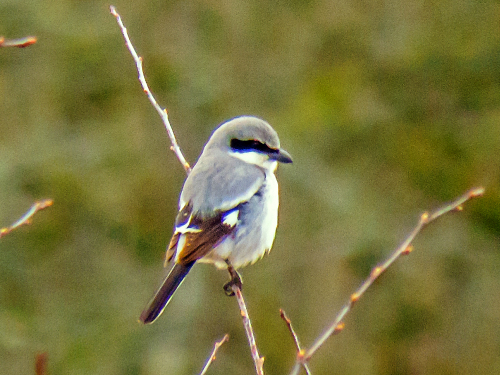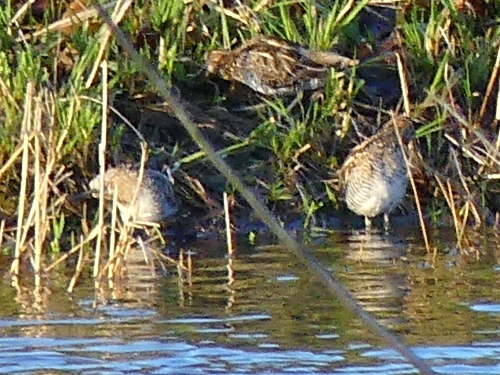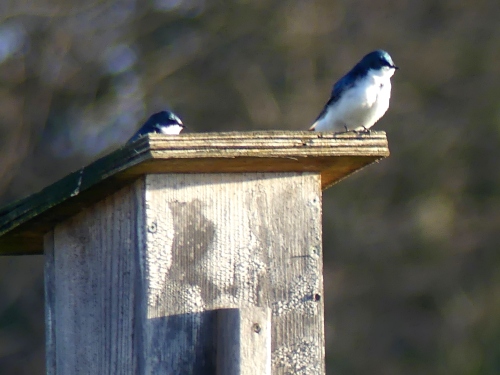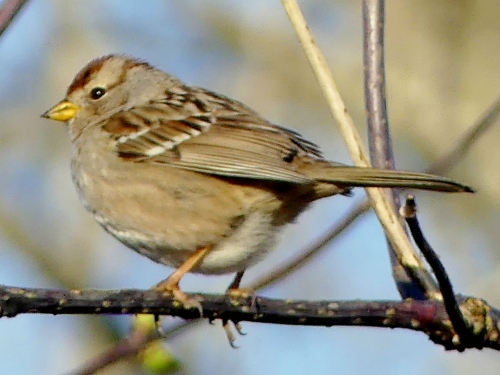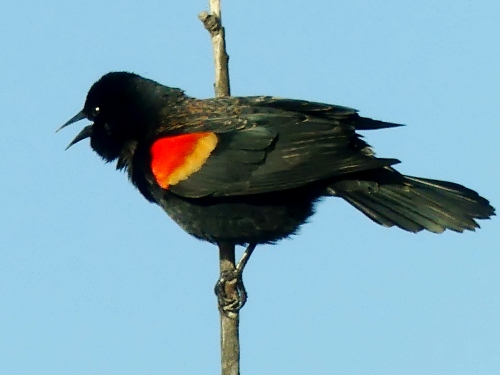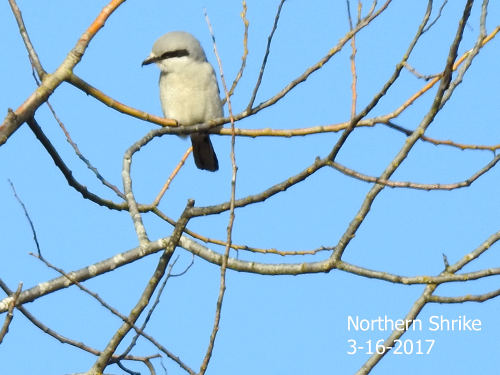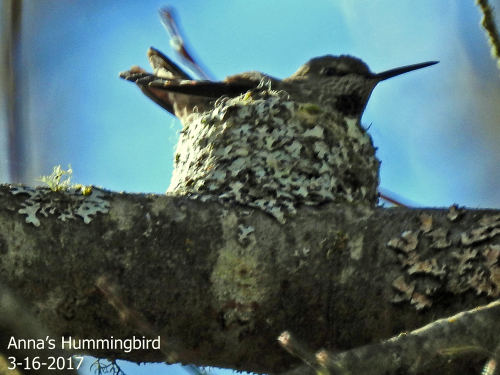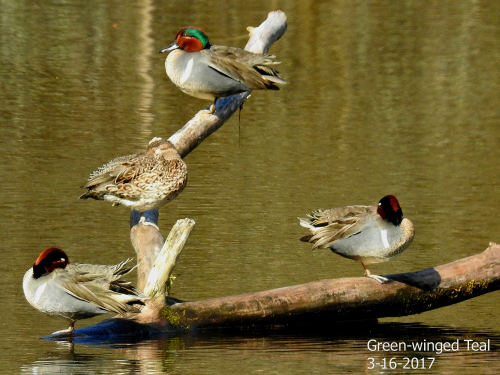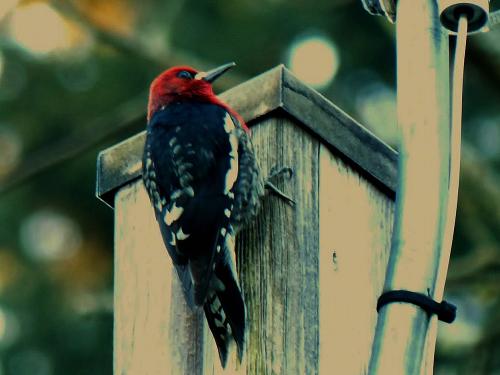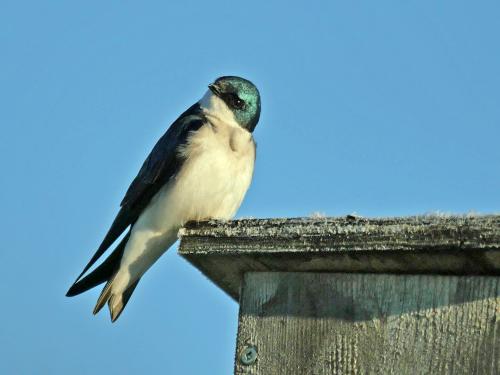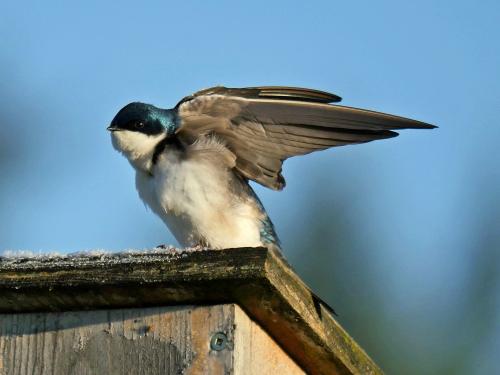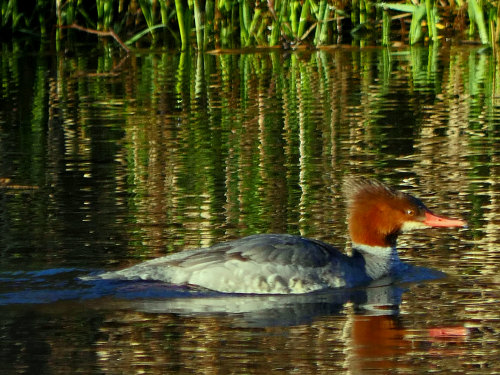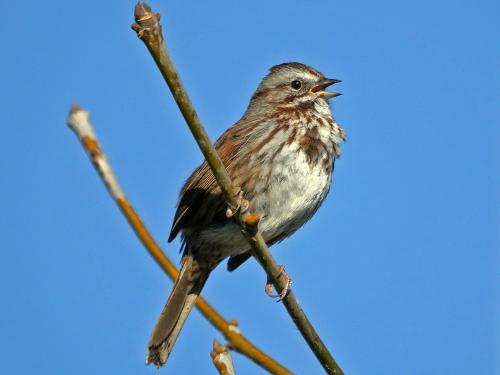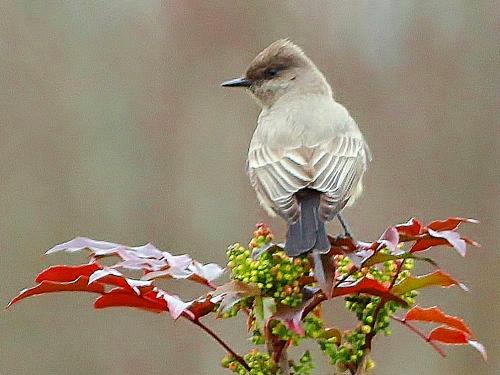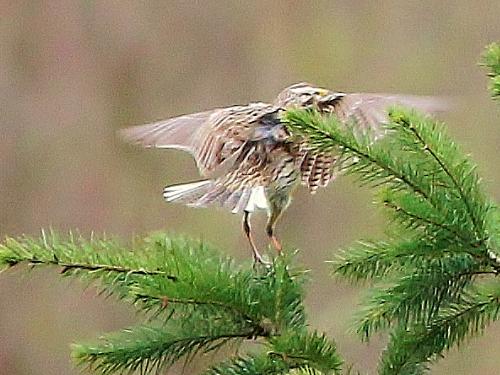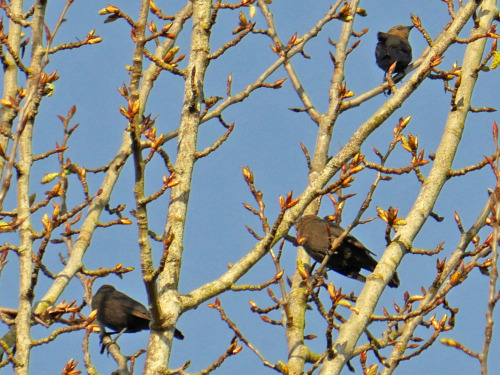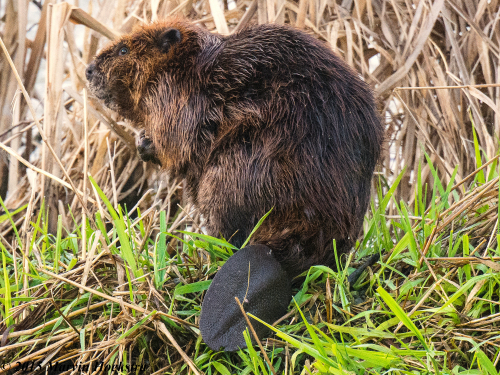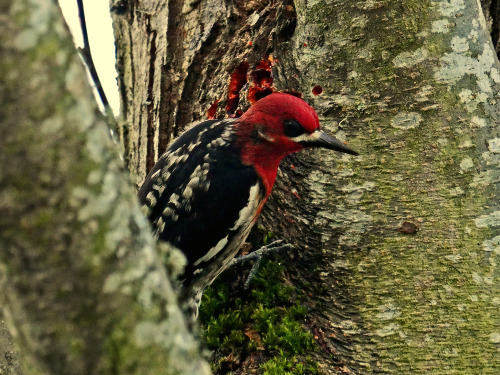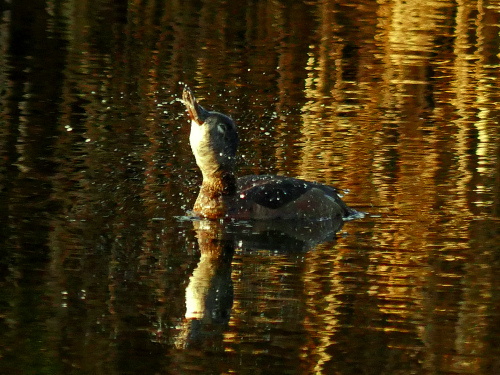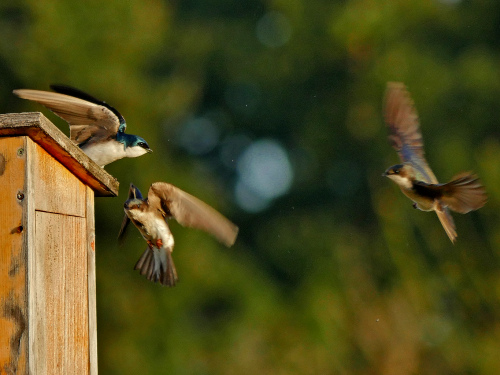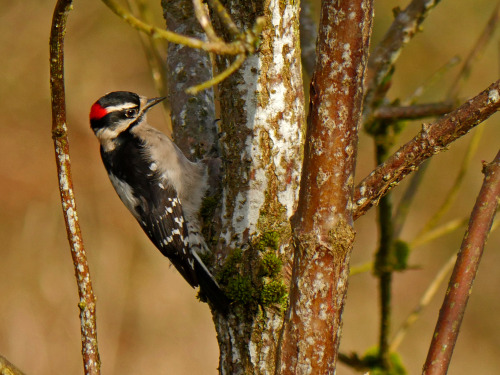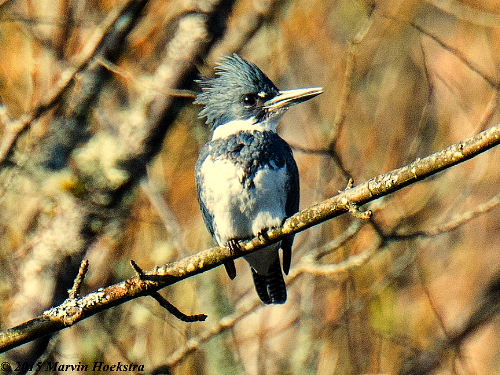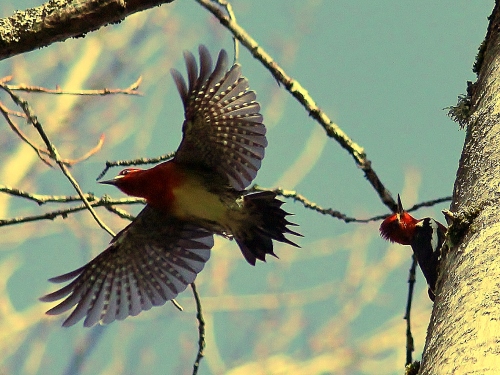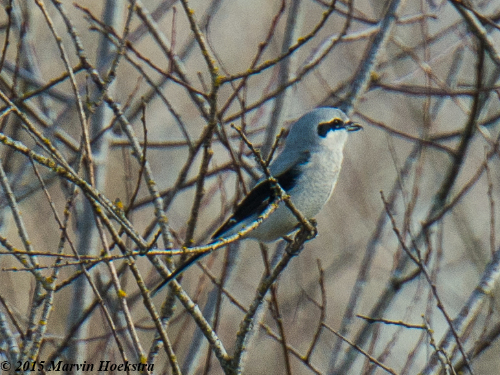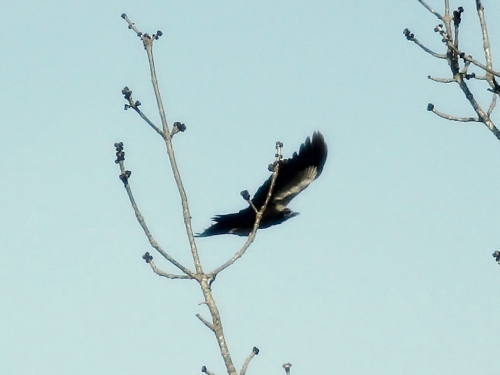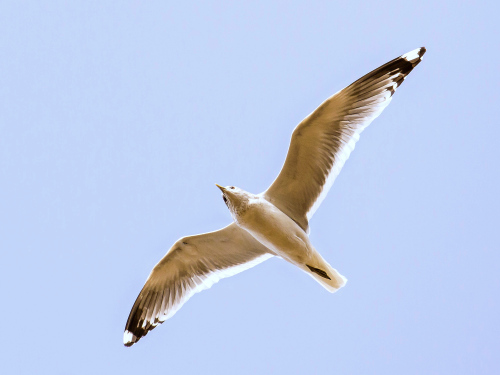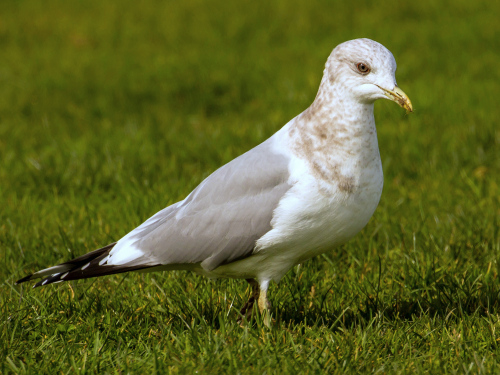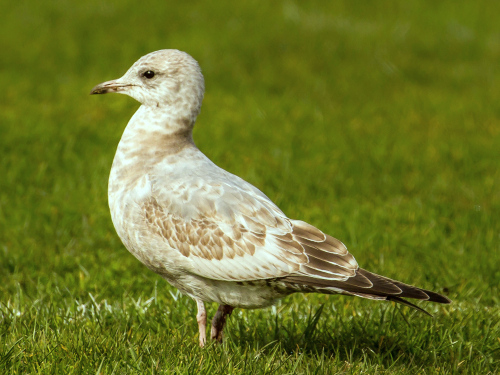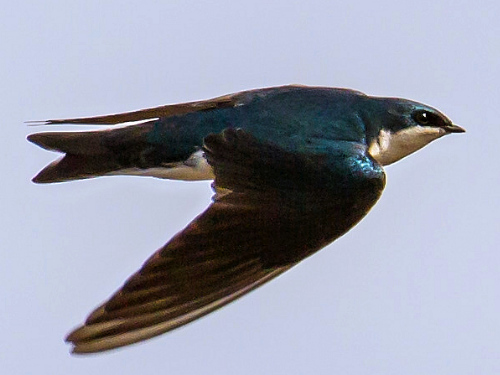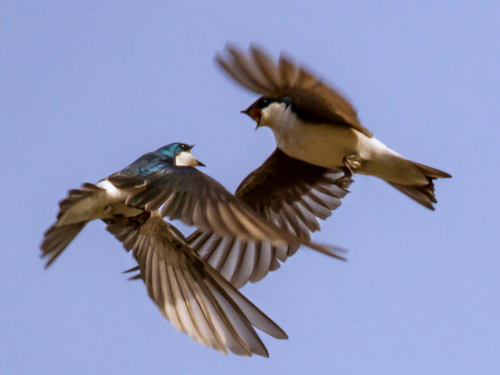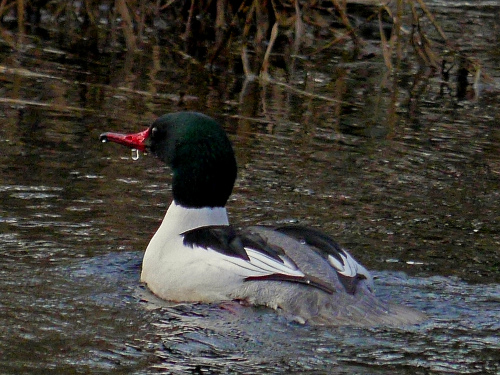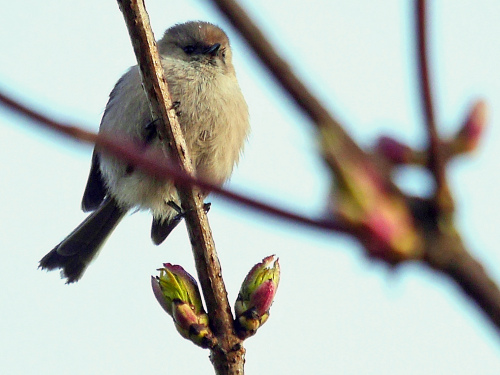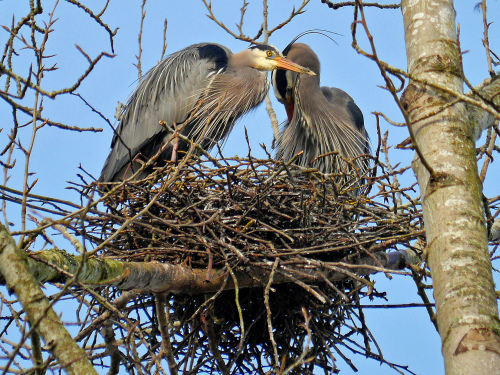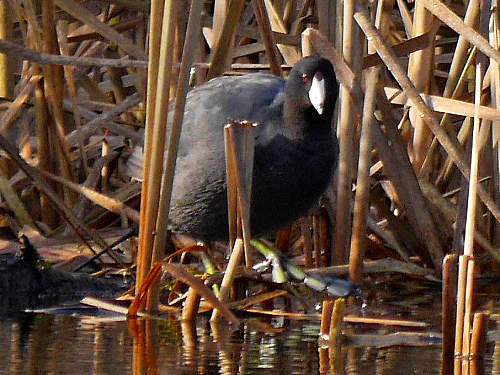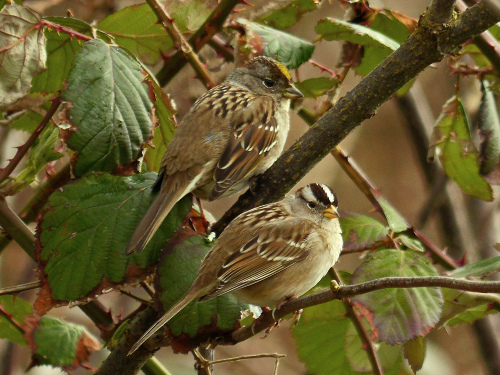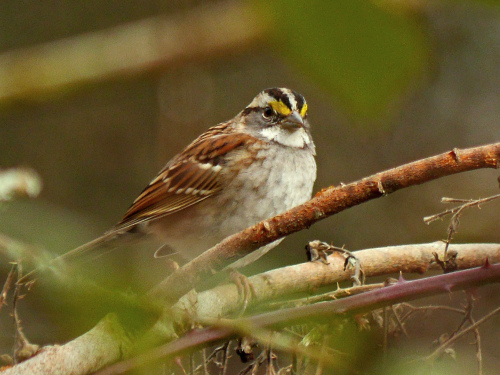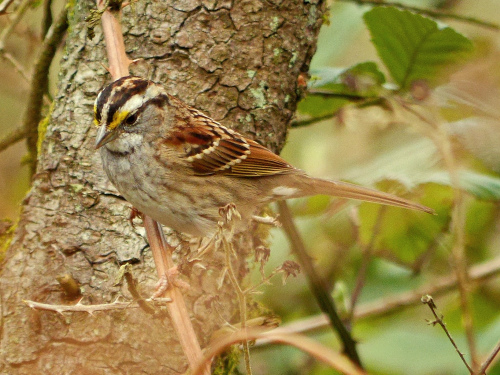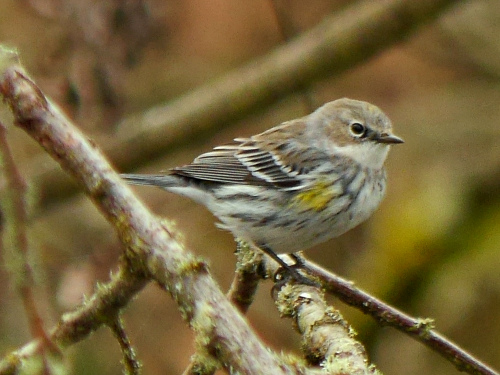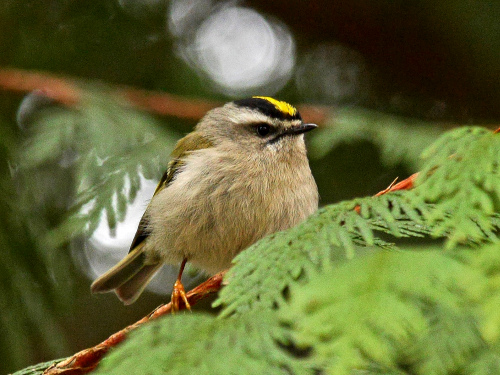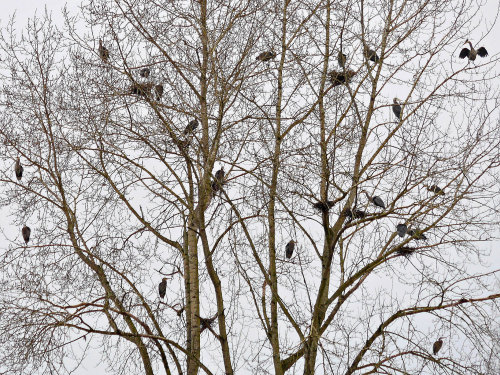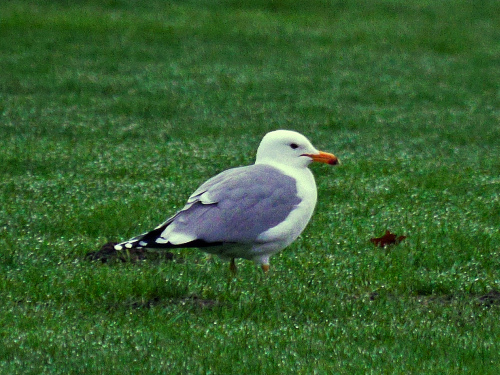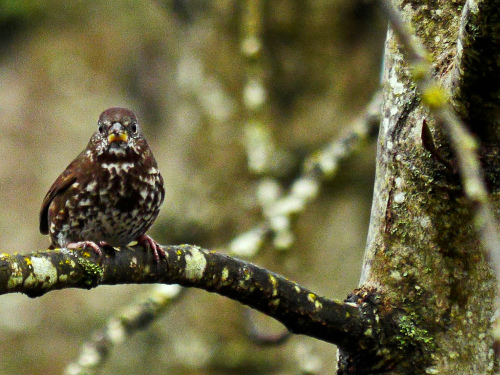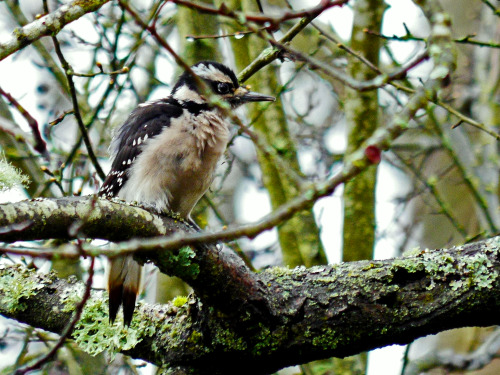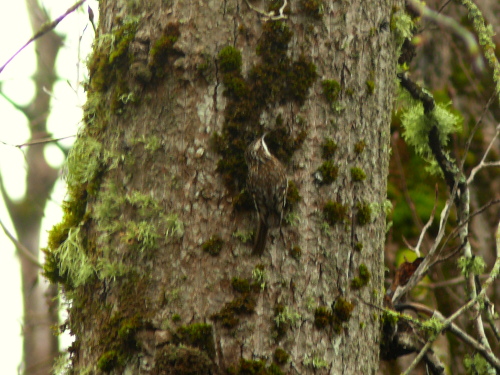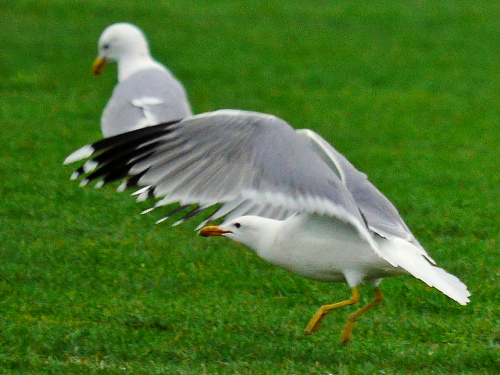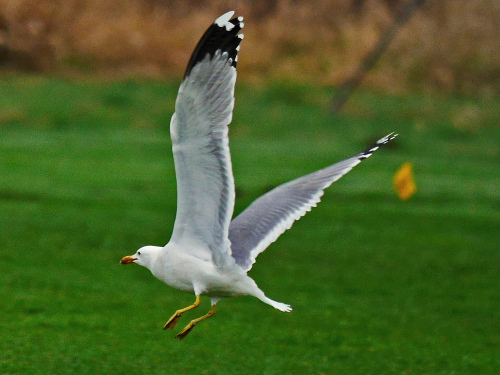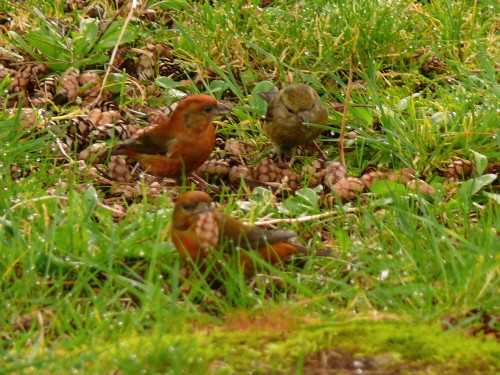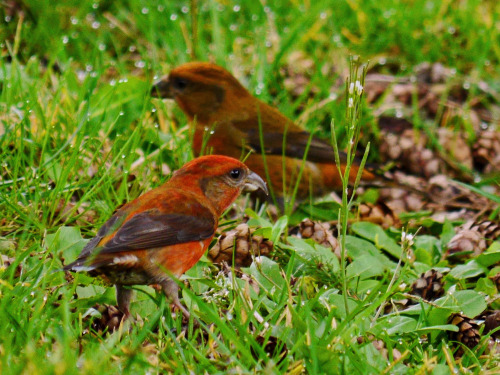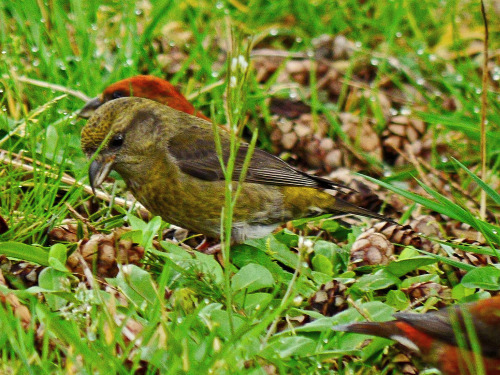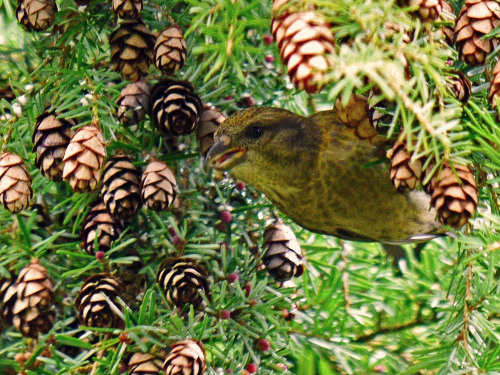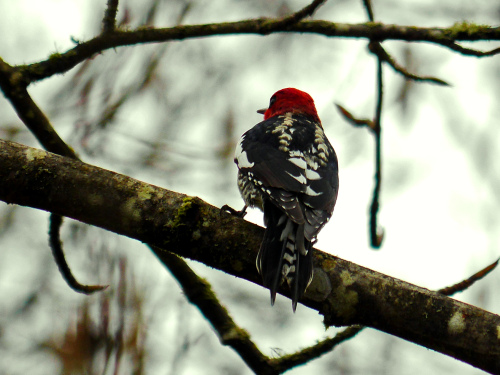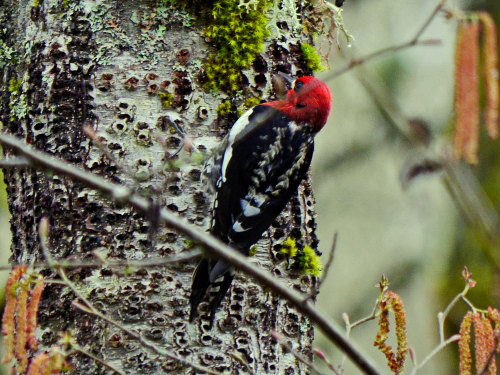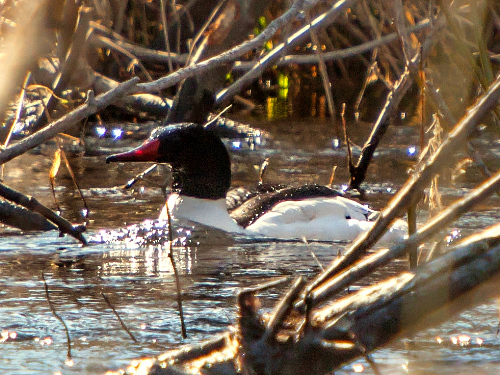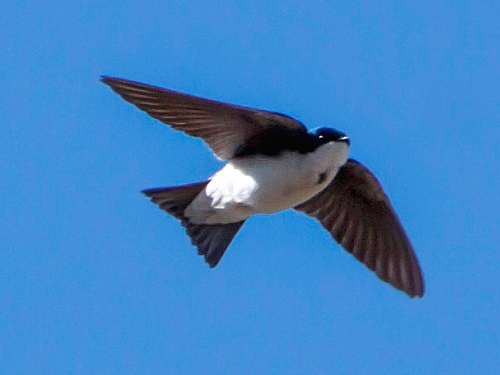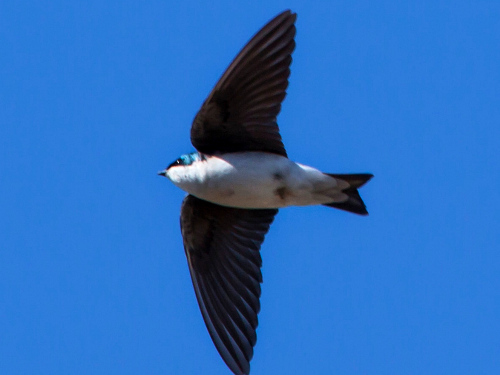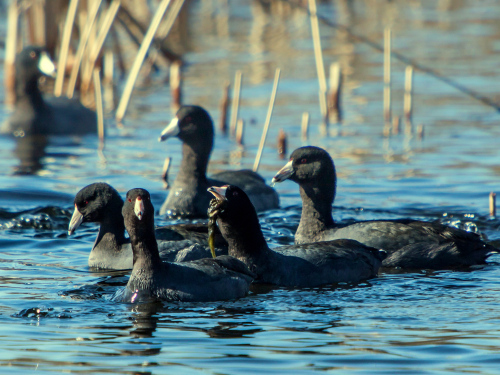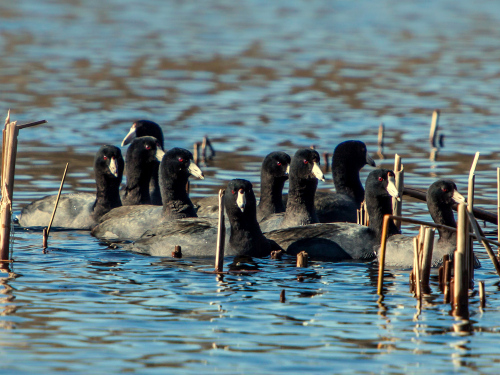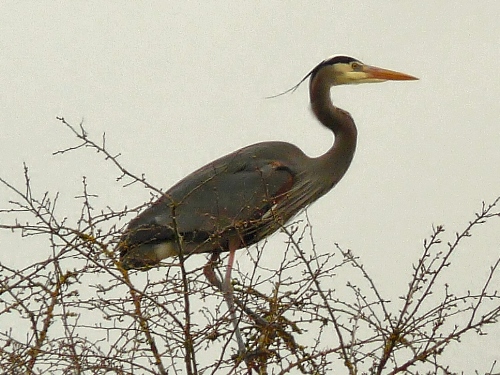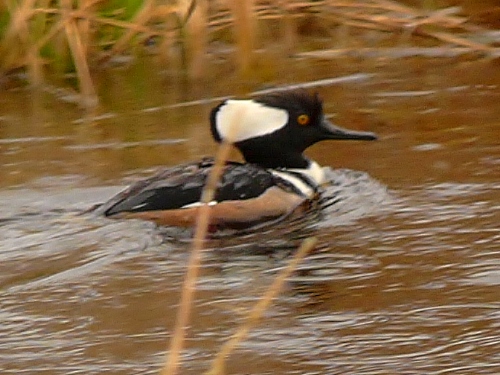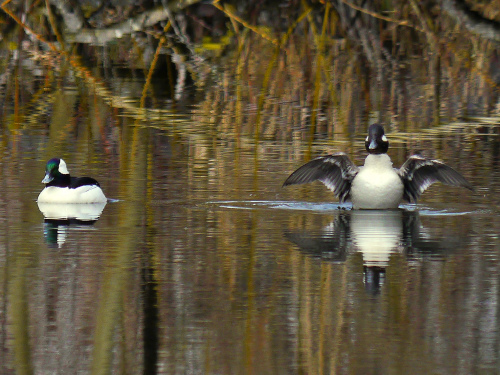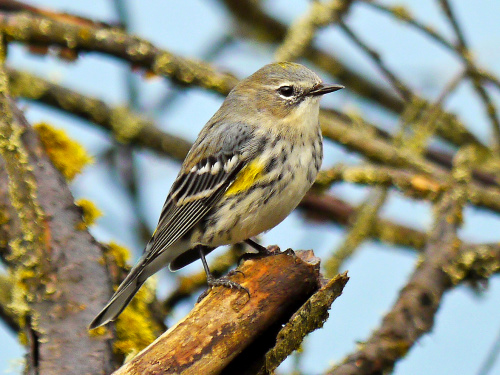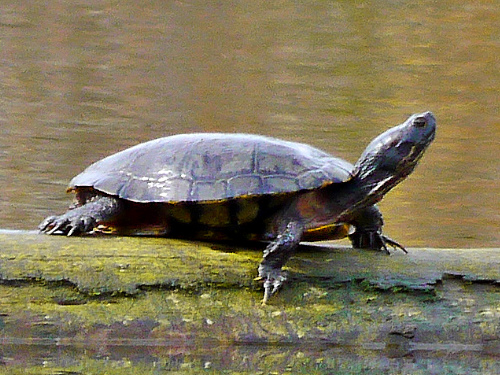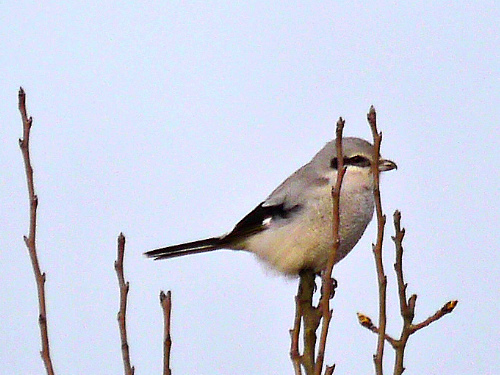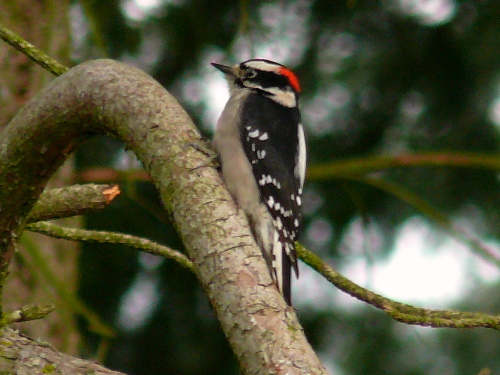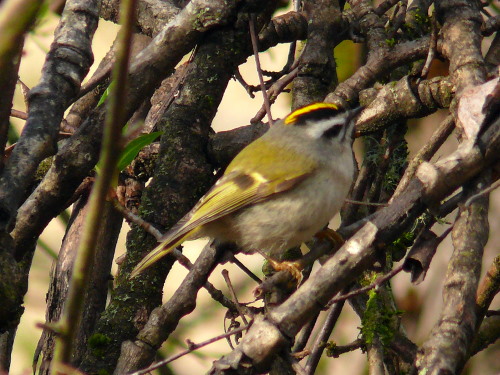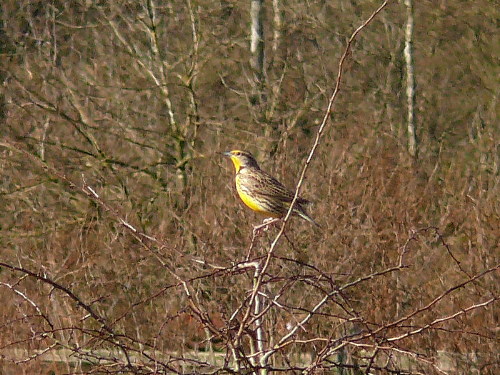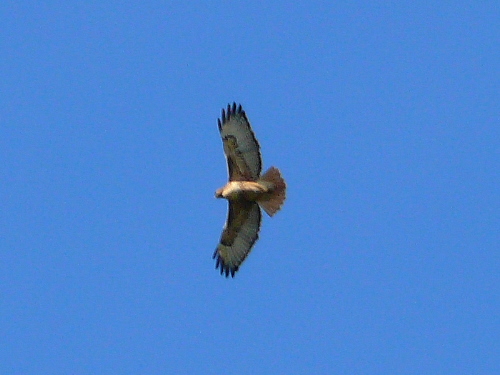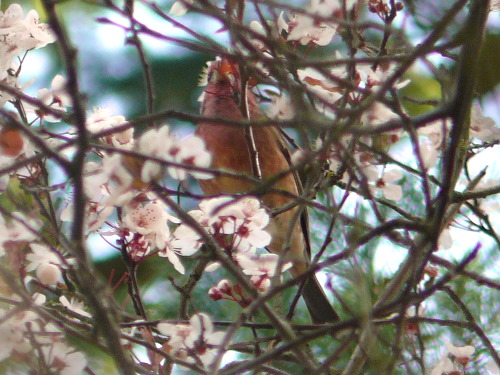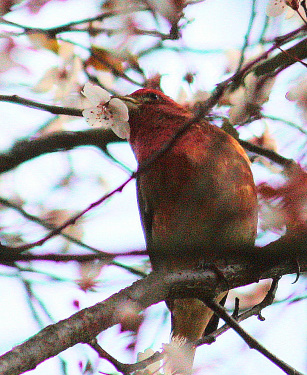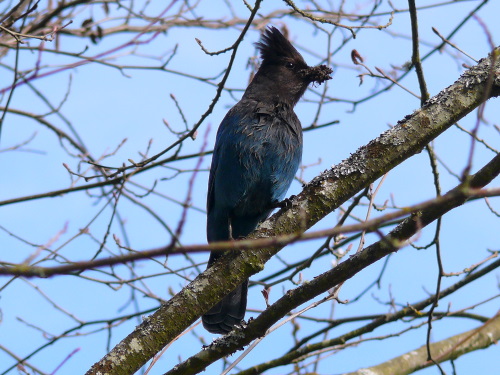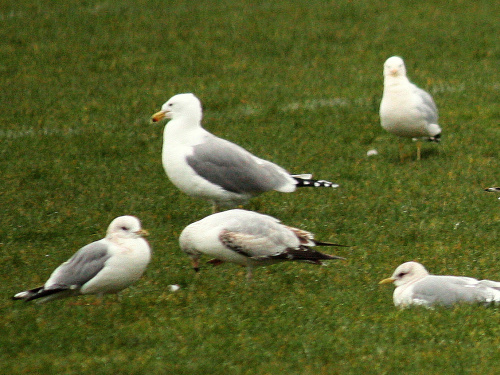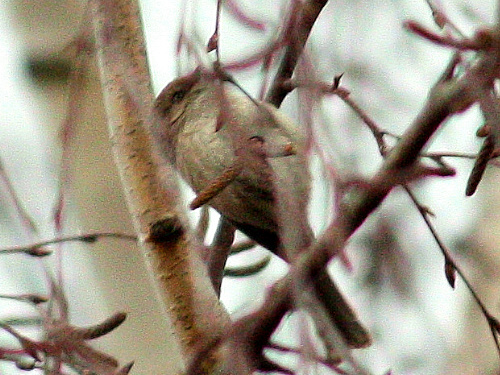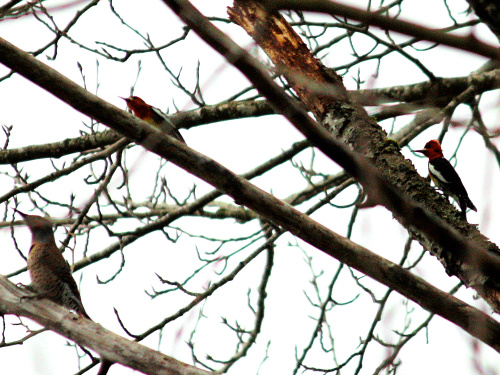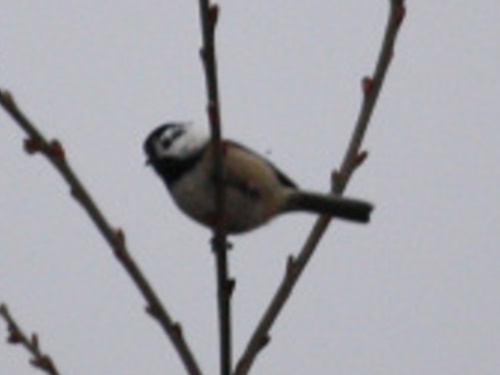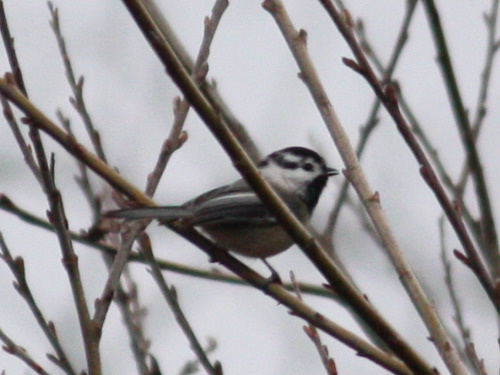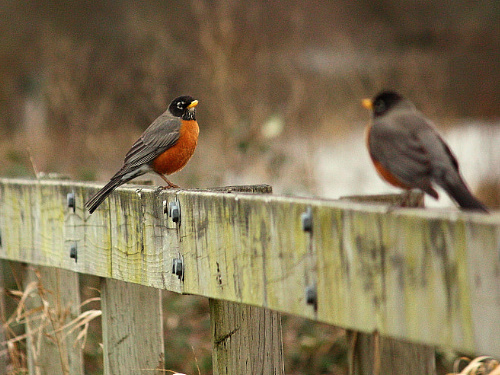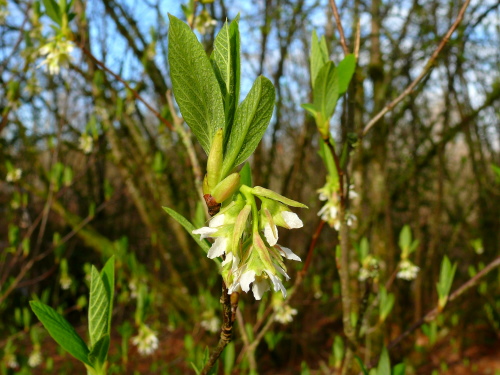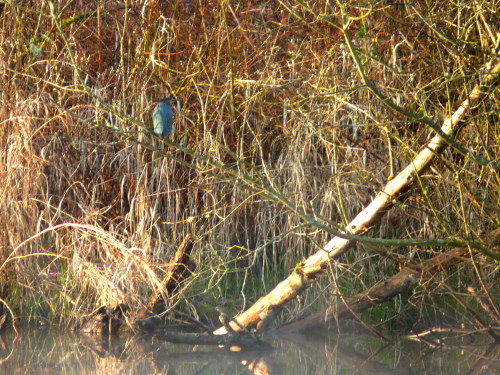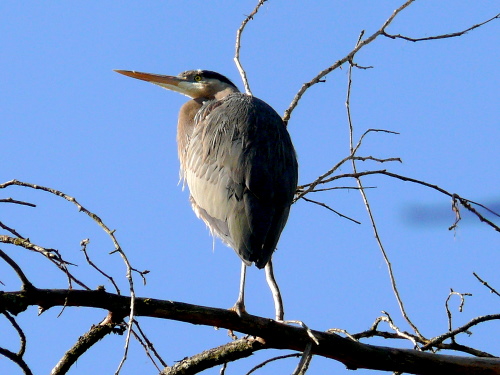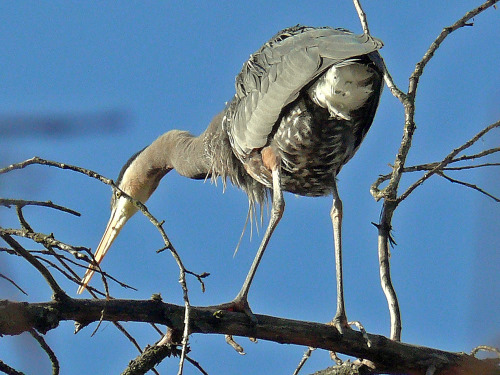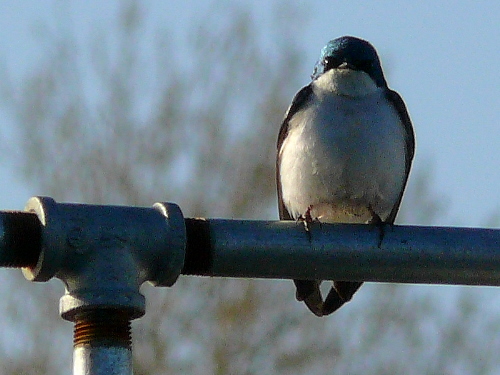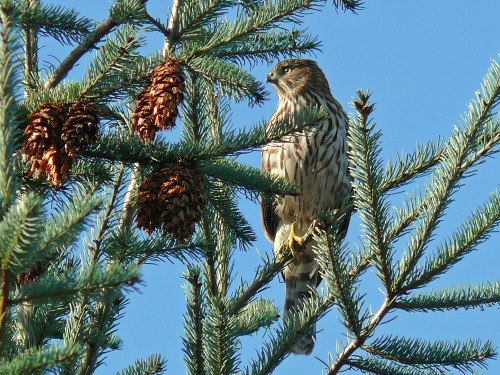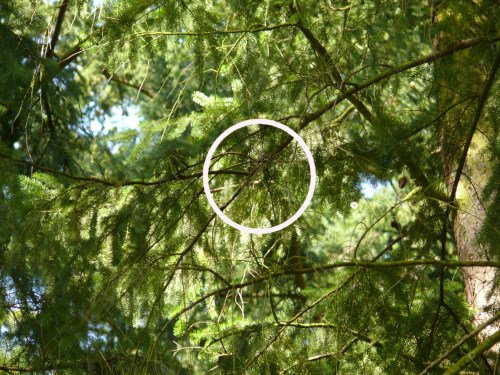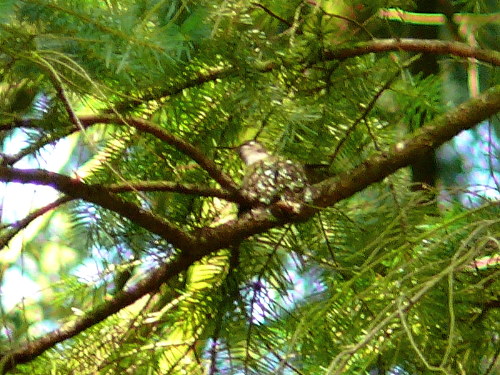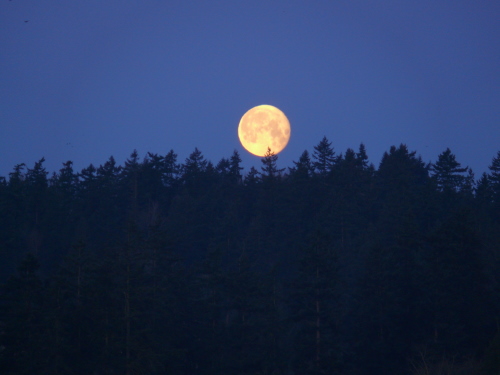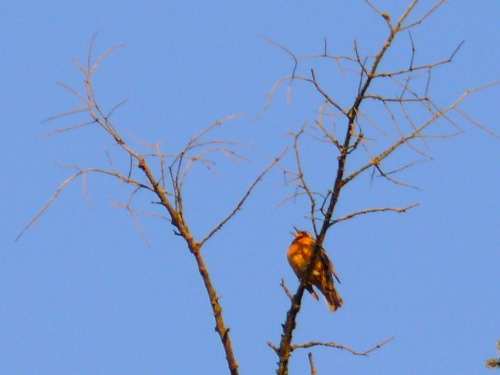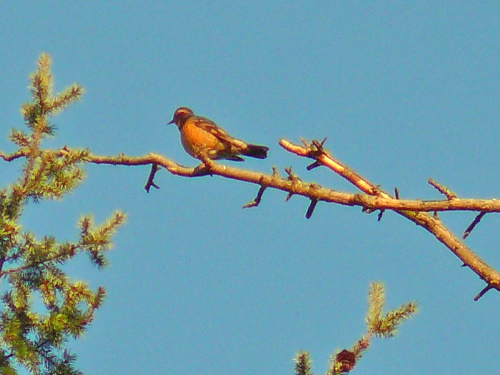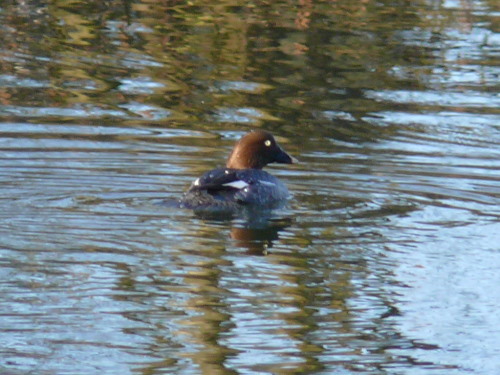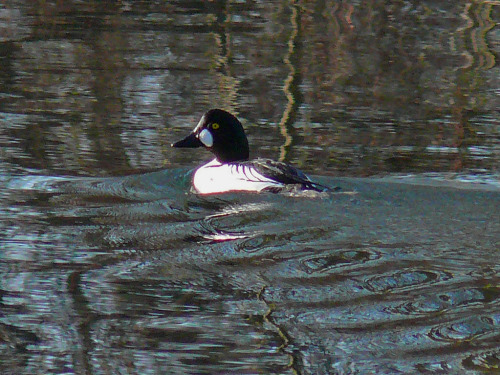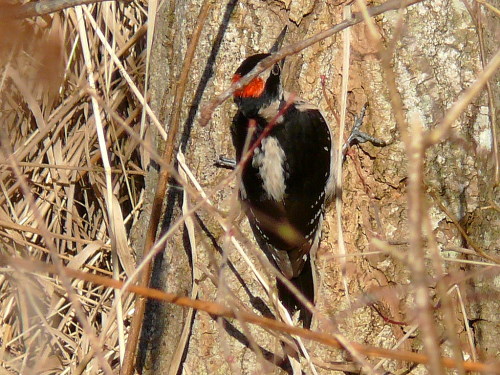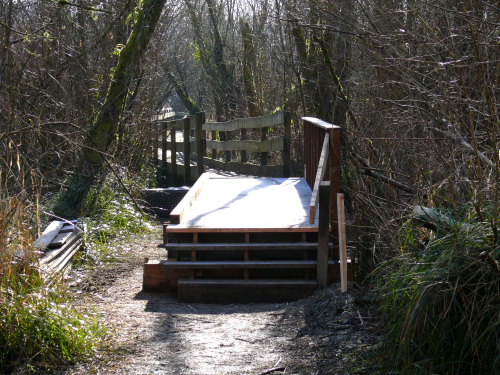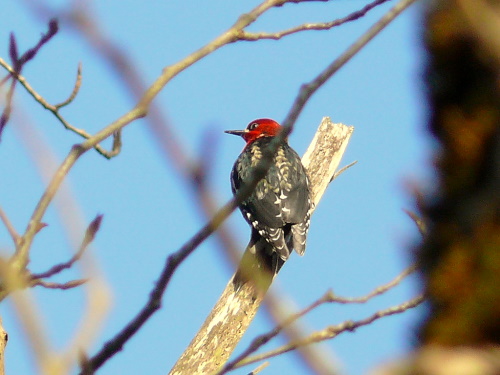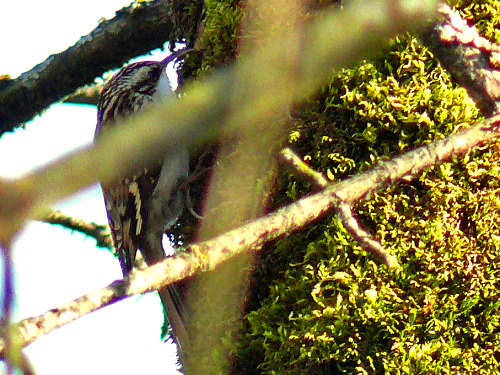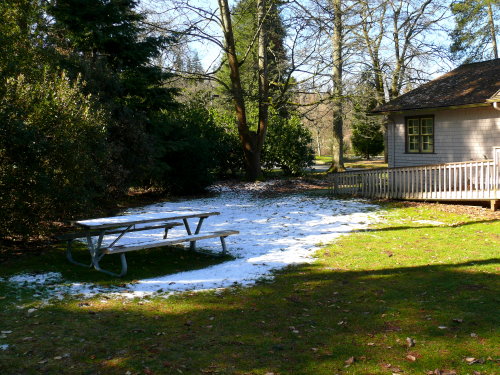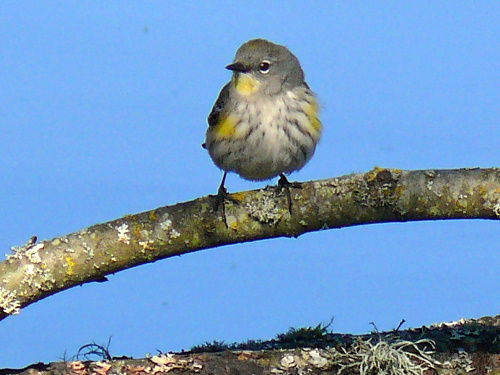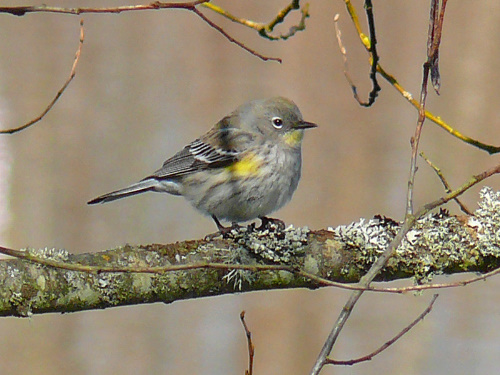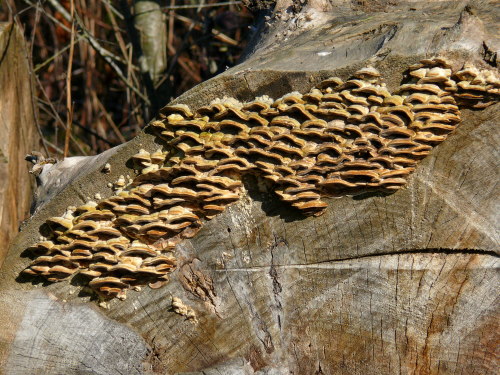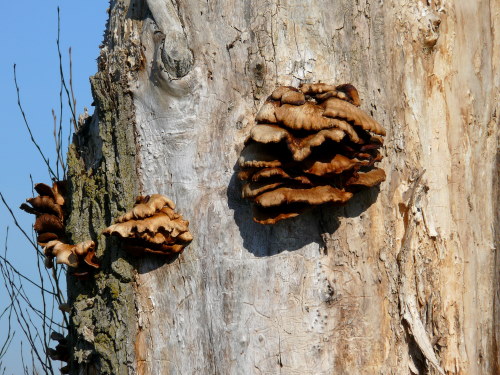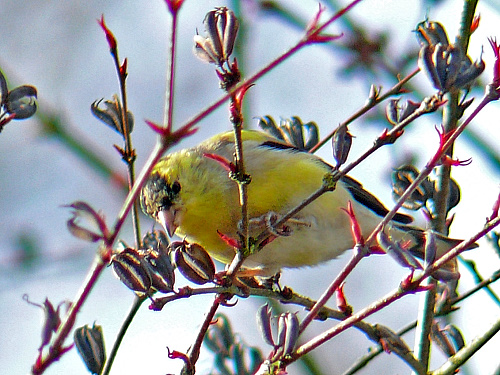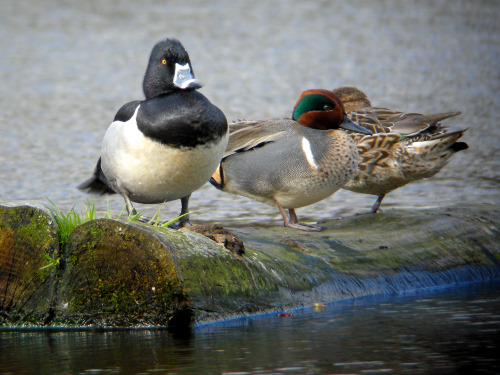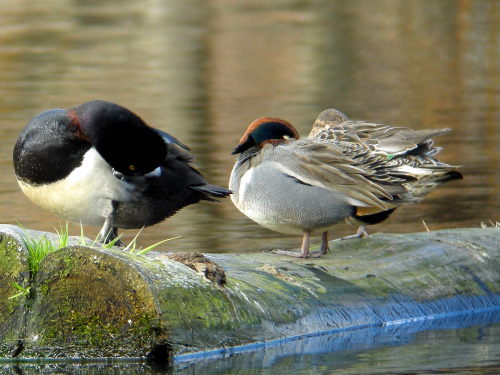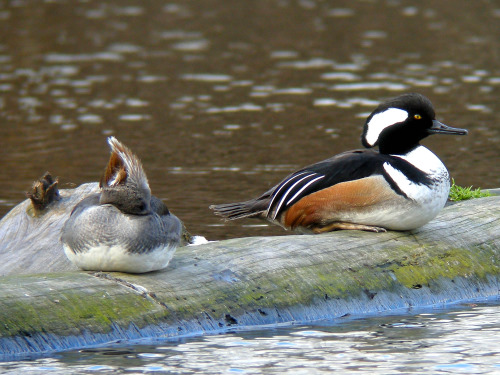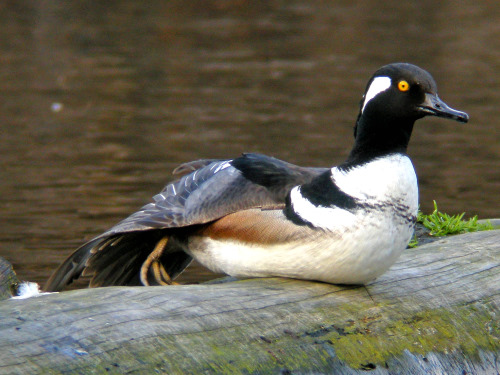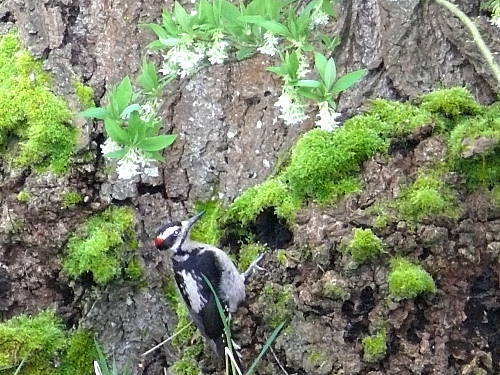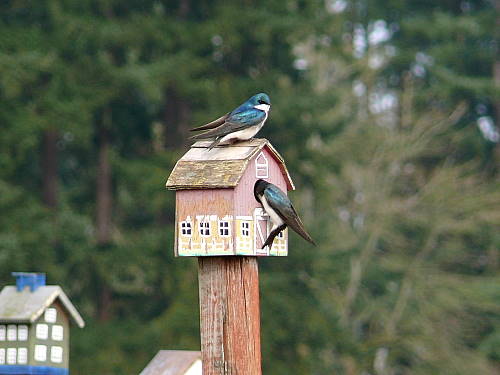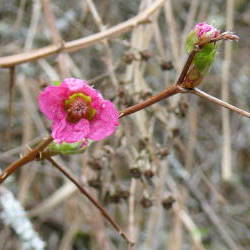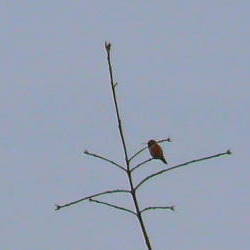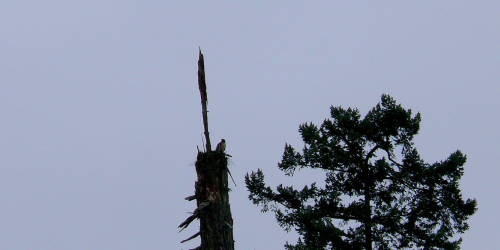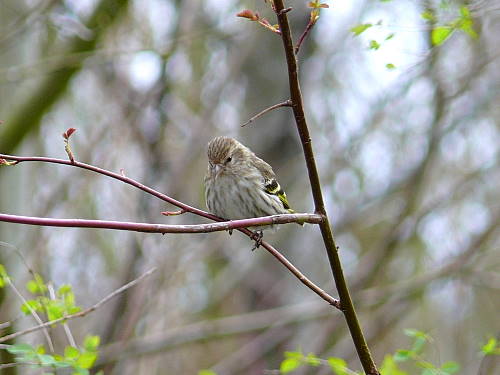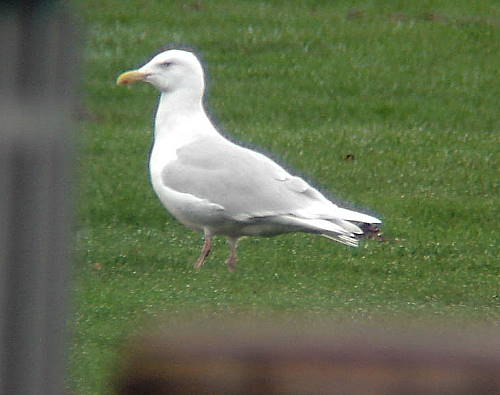Prev |
Bird Sightings Week 11
|
Next |
Rarities for Week 11:
| Loggerhead Shrike | 12-Mar-95 | A. Coles per FN per E. Hunn spreadsheet |
| Loggerhead Shrike | 17-Mar-09 | |
| Loggerhead Shrike | 14-Mar-18 | Model airplane field |
| "Slate-colored" Fox Sparrow | 17-Mar-04 | "Rocky-mountain group" subspecies, probably P. iliaca altivagans |
Report for March 13, 2025 Birding at Marymoor
| Weather forecasts again were way worse than what we actually got. There was a little mizzle pre-dawn, and just a touch of mist occasionally during the actual survey. We even had sun and shadows a couple of times. Temps were in the 40's, though there was a breeze a lot of the time. The heavy rain apparently came through faster than expected. The birds took their time getting going today. Jordan and Mason were just back from birding in Thailand (400+ species), so at least we had something to talk about. There wasn't too much of note today, and we had a very similar list of birds to last week's. Highlights:
Despite two reports of Rufous Hummingbird already this year at Marymoor, we are still waiting for our first. They should definitely be back in numbers in the next week or two. Also possible in the next couple of weeks are Turkey Vulture, Say's Phoebe, and Mountain Bluebird. And then, the first week in April should feature quite a few additional First of Year birds. Misses today included Killdeer, Wilson's Snipe, and Northern Shrike. For the day, 56 species. Adding California Gull, the survey 2025 list is at 78 species. = Michael Hobbs |
Report for March 14, 2024 Birding at Marymoor
|
First off, NOBODY brought us pie on Pi Day. Other than that, though, we had a really good morning at the park. It was sunny, windless, and while it was a frosty 32 degrees at the start, it reached 50 degrees by the end. LOTS of singing and other signs of the ramping up of the breeding season.
Highlights:
I was not able to get close enough to the shrike to rule out Loggerhead; we've seen Loggerhead Shrike 3 years previously during this week of the year, accounting for 15% of shrike sightings during Week 11. That's a high enough ratio that I won't just assume this was a Northern Shrike. That said, most of our LOSH sightings (in fact, all our other sightings) have been in April.
The Great Blue Heronry is getting very active, with herons sitting down in many of the nests, lots of nest building observed, and one copulation observed as well.
Misses today included Hooded Merganser, Short-billed Gull, Violet-green Swallow, Purple Finch, and American Goldfinch.
For the day, 62 species. We're up to 78 species for the year.
= Michael Hobbs
|
|
|
|
|
|
|
|
Report for March 16, 2023 Birding at Marymoor
| It was COLD at the start (28 degrees), under clear skies. The sun did help to slowly warm things up. It was a pretty birding day. Most notably, we had our first Spring migrants of the year. Highlights:
We also had the first turtles of the year at the Rowing Club pond, both Painted Turtle and Red-eared Slider The list of species singing was very similar, if not identical, to last week's. Yesterday, I had four AMERICAN WIGEON below the weir, my first since January at the park. I also heard and AMERICAN GOLDFINCH and saw two HOUSE FINCH yesterday, both of which were among today's misses. Other misses for the day included Short-billed Gull, Ring-billed Gull, Northern Shrike, Violet-green Swallow (seen 19 of previous 28 years), and Pine Siskin. Speaking of misses, we will be missing MARK & LEE CRAWFORD, who are moving to New York. One, the other, and frequently both, have been on well over 600 of the Marymoor surveys since 2006. We wish them a great time with spring warbler migration in Marymoor East! For the day, a year's best 61 species, plus the Ring-necked Pheasant. = Michael Hobbs |
|
|
|
|
Report for March 17, 2022 Birding at Marymoor
| This week at Marymoor, with Michael out of town, Brian Bell and I led the weekly walk. It was overcast all morning but the rain held off for the entire walk. We came with much hope for spring surprises, but in the end it was a pretty uneventful day w/ nothing to make Michael jealous for missing out [our ultimate goal here]:
Highlights:
Misses included Belted Kingfisher, accipiters, owls, and spring returnees we were hoping for: no Says Phoebe [seen Saturday @ Marymoor], no Mountain Bluebird [ditto], Savannah Sparrow
Nevertheless, 56 species for the day - and a good morning walk.
Matt Bartels
Seattle, WA
|
Report for March18, 2021 Birding at Marymoor
|
A really good day at Marymoor today. First, the sunrise was spectacular. The weather held okay for our visit; cloudy with touches of wind, but only very occasional mizzle. Birdy, and with signs of spring!
Highlights:
I had a flyby look at either a Band-tailed Pigeon or a Eurasian Collared-Dove, but it was across the river, through the trees, under the clouds, and a fairly brief look. Either species would be FOY for the survey, but we got neither.
From the Rowing Club dock, we enjoyed seeing a pair of HOODED MERGANSER next to a pair of WOOD DUCKS. All the goodies – the hoodies and the woodies.
Monday and Tuesday, I had ROCK PIGEON, NORTHERN SHRIKE, and two singing WESTERN MEADOWLARKS.
Other misses for today included Mew Gull, Ring-billed Gull, and American Goldfinch.
For the day, 65 species, with three more for the week. For the year, with four FOY, I think we’re at 94 species.
= Michael Hobbs
|
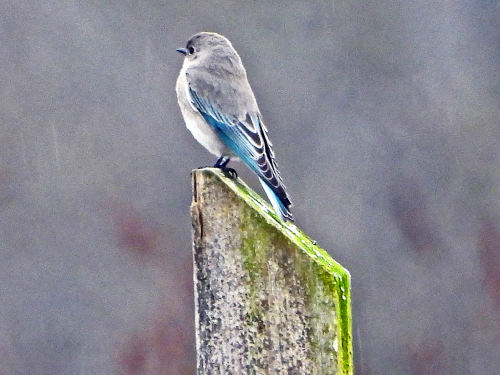
Female Mountain Bluebird in the East Meadow. Photo by Bob Asanoma |
Report for March 16, 2020 Birding at Marymoor
|
The weather forecast looked really good today, and it mostly was fine, though we did have about an hour of mist an drizzle. Nothing too bad. It was super-birdy today, especially full of woodpeckers. Cold to start (33 degrees), but it was mostly not too bad, warming up by the end.
Highlights:
First 3-Finch day of 2020, with House Finch, Purple Finch, and Pine Siskin.
Even using today’s date, 3/12, this is still historically at the early side for RUFOUS HUMMINGBIRD. They arrived this year, however, at least as early as 3/7 (I had 3 different males that day). Only 2014, 2015, and 2016 had earlier reports of Rufous at Marymoor. Not only did we have all five regular WOODPECKER species, we had multiple birds of each species. Pairs of both Pileated and Hairy, many Northern Flickers and Downy Woodpeckers, and somewhere between 3 and 7 Red-breasted Sapsuckers (I’ve counted it as 5). So probably more than 20 woodpecker individuals. Sapsucker, Downy, and probably Flicker were drumming.
Misses today included Ring-necked Duck, Mew Gull, Ring-billed Gull, Northern Shrike (but I had it Monday, Tuesday, and yesterday), Belted Kingfisher, Marsh Wren, and American Goldfinch.
For the day, 63 species, counting the swans and falcon.
= Michael Hobbs
|
Report for March 14, 2019 Birding at Marymoor
| Well, it was a fine day at Marymoor. But... You know those signs in bars, “Free beer TOMORROW”? Well, today’s motto became “Great birds NEXT WEEK”, for except for the continuance of TREE SWALLOWS, we didn’t have any new spring birds. Still, on a nice morning with lingering overcast but no wind, we managed 59 species, and really CAN’T COMPLAIN. Still, spring has to spring sometime soon.
Highlights:
59 species today, plus 3 more earlier this week. Not bad, but still waiting on Rufous Hummingbird, Say’s Phoebe, Mountain Bluebird, Osprey, Savannah Sparrow, etc. Great Spring Birds NEXT WEEK. == Michael Hobbs |
|
|
|
|
|
|
|
|
|
|
Report for March 15, 2018 Birding at Marymoor
| A clear night made for a frigid morning – just 27 degrees to start, with a fair amount of fog. But clear skies and no wind meant things warmed up, reaching 50 degrees when we called it a day just before noon. It was BIRDY, and while we couldn’t find the Loggerhead Shrike seen yesterday at the model airplane field, we did find many species, including a SAY’S PHOEBE in the Pea Patch.
Highlights:
We had a good day for animals too, with Eastern Gray Squirrel, American Beaver, Muskrat, Eastern Cottontail, “Black-tailed” Mule Deer, Pacific Treefrog (heard only), Painted Turtle, and Red-eared Slider. Misses today included Ring-necked Duck, Hooded Merganser, Virginia Rail, Wilson’s Snipe, Mew Gull, Ring-billed Gull, Northern Shrike, American Goldfinch, and White-crowned Sparrow. For the day, we hit 60 species for the first time in 2018. For the year, since last Thursday’s report, we’ve added Rufous Hummingbird, American Kestrel, Say’s Phoebe, Loggerhead Shrike, Violet-green Swallow, Savannah Sparrow, and Western Meadowlark, to bring our 2018 list to 92 species. Quite a 7-day stretch! == Michael Hobbs |
|
|
|
|
|
|
|
|
|
|
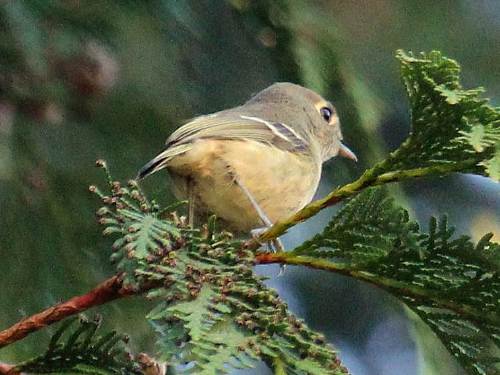 Hutton's Vireo in cedar near windmill. Photo by Milt Vine |
|
Report for March 09-14, 2018 Birding at Marymoor
| March 10: Yesterday, Kazuto Shibata got photos of a SAY’S PHOEBE at Marymoor, so I went down this morning to see if I could find it. Alas, it probably flew on during the night. However, my trip was not wasted. I was greeted by a WESTERN MEADOWLARK in full song at the north end of the East Meadow. At the end of my walk, there was a male AMERICAN KESTREL on the central perch post in the East Meadow. Also new for 2018 was a SAVANNAH SPARROW, also in the East Meadow. Birds we didn’t have on last Thursday’s survey were ROCK PIGEON, VIRGINIA RAIL (first since Week 1), PURPLE FINCH, and LINCOLN’S SPARROW. There were some TREE SWALLOWS flying the East Meadow and a couple of RED-BREASTED SAPSUCKERS near the west end of the boardwalk. I also heard a PILEATED WOODPECKER calling several times. Not a bad 90 minutes of walk, where of the 36 species, 10 are notable. So I believe our 2018 list is now at 89 species, with 66 of those being reported this week. == Michael Hobbs March 14: I went down to the model airplane field at Marymoor this morning to see the Say's Phoebe Michael Hobbs reported yesterday (there were two here this morning). There was also a Loggerhead Shrike working the weed line at the back of the airplane field. Todd Sahl |
|
|
|
|
Report for March 16, 2017 Birding at Marymoor
| We were a bit impatient for spring today, I think. It was breezy, but pretty warm (40’s) and SUNNY, and we wanted spring birds NOW. We only got a couple. But a pretty nice day anyway.
Highlights:
We searched for, and were unhappy that we didn’t find, Rufous Hummingbird, Say’s Phoebe, or Mountain Bluebird. Next week. They’ll be back next week. Count on it! For the day, 54 species. == Michael Hobbs |
|
|
|
|
|
|
|
|
|
|
Report for March 17, 2016 Birding at Marymoor
| A gorgeous day today, but it started out FRIGID – it was 28 degrees when we started, though it s-l-o-w-l-y warmed to about 47. Beautiful sun too, though some fog pre-dawn. It was pretty birdy, but we’re still mostly having winter birds. Spring always takes so long to get here, after teasing us with the first arrivals.
Highlights:
For the day, “only” 62 species. Say’s Phoebe and Northern Shrike were NOT seen today, though both were seen in the last week. HAIRY WOODPECKER was our only year bird, to bring our year list to 87 species, if I count correctly. == Michael Hobbs |
|
|
|
|
|
|
|
|
|
|
Report for March 12, 2015 Birding at Marymoor
| Actually rather quiet today, perhaps because of a moderately stiff breeze. The weather was otherwise fine, with temps in the 50s and sun filtering through the clouds all morning. But it was definitely quiet compared with recent weeks.
Highlights:
At least 4-5 times, we saw the herons fly up from the heronry when eagles (both adult and juvenile) flew past. Disturbance frequency was high. When the herons were at the heronry, they were standing up in alert posture, not settled comfortably. YELLOW-RUMPED WARBLER and FOX SPARROW singing today; first of spring. The Fox we heard wasn’t really coming out with a full, loud song yet. We had a great look at an AMERICAN BEAVER just below the weir. PACIFIC TREE FROGS were in full chorus pre-dawn. For the day, “just” 58 species. We had several “misses”, including Virginia Rail, Wilson’s Snipe, any gulls except GWGU/”Olympics”, Brown Creeper, and Pacific Wren. We’ve also had Western Meadowlark 10 times previously for this week of the year, so they kind of count as a miss today too. Adding BREWER’S BLACKBIRD and my MOUNTAIN BLUEBIRD from yesterday afternoon (below) to the year’s list, we’re now at 86 species for the year. == Michael Hobbs Report for March 11, 2015 I made a quick stop at Marymoor this afternoon and found a female MOUNTAIN BLUEBIRD on the central perch post in the East Meadow at around 3:30. This is extremely early for MOBL at Marymoor: 5 days earlier than the previous earliest sighting, 1999-03-16, and two weeks earlier than a typical early-season sighting. We’ve had quite a few sightings spread out between March 22 and April 29, with most of those being in the last 10 days of March. We see MOBL about every other year, on average. Yet another earliest sighting ever for 2015... == Michael Hobbs
|
|
|
|
|
|
|
|
|
|
|
|
|
|
|
|
|
|
|
|
|
|
|
Report for March 13, 2014 Birding at Marymoor
| This week, the weather was not as nice as forecast. It was cold to start (33 degrees), and was very slow in warming up. We also got quite a bit of thin overcast, and a nasty north breeze by about 9:30. It was a day of heard-only birds, distant sightings, and quiet periods, with short bouts of great looks and birdy rushes. In all, a fine day of birding.
Highlights: Wood Duck Pair flew upstream When we were passing by the GREAT BLUE HERON heronry, we heard a call several times that seemed to be coming from the heronry. It sounded very much like a dove or pigeon, but was not the typical call of any of the doves/herons in this area. There were 18 pairs of eyes searching the ~12 cottonwoods that comprise the heronry, and we could find no birds other than herons up there. It is very unclear that a heron could make the cooing noise that we heard, as their voices are usually so raspy. Nor could I find any reference to such a vocalization in Birds of North America, nor amongst the recordings in the Cornell Master Set. But we could not find anything else that might have made the call. ??? At the Rowing Club parking lot, in the blackberries immediately north of the southern parking area, we had great looks at three WHITE-THROATED SPARROWS. When I played the iPod, three popped up to the top of the blackberries, giving us great looks. I may have heard the call of a 4th bird off to my right, but I cannot verify a 4th. On January 1st, I saw 3 WTSP about 300 yards NE of that location. For the day, we had 58 species in all. For the year, adding BAND-TAILED PIGEON, EURASIAN-COLLARED DOVE, and our first Thursday VIOLET-GREEN SWALLOWS, our year list is now at 88 species. == Michael Hobbs |
|
|
|
|
|
|
|
|
|
|
|
|
|
|
|
|
|
|
|
Report for March 14, 2013 Birding at Marymoor
| Predawn owl watching at Marymoor Park has been a wonder over the years. I never was a morning person until I discovered what I'd been missing: Venus rising in an indigo sky above a laser cut-out of the Cascade mountains in deepest aubergine; Mt. Rainier turning peach and hot pink under a lenticular cap as the first rays of the sun reach it, while the lesser peaks are still in charcoaled shadow; the meadows sparkling in frozen fog while the sky blazes orange on pale blue behind bare cottonwoods in winter.
I’ve seen the crescent moon rising in the east, the full moon setting in the west, Jupiter with its moons, Saturn with its rings, and shooting stars streaking across the sky. I’ve discovered how alive the world is when most people are still lazing in their beds: Bald Eagles chortling to each other in the darkness, Killdeer and Wilson’s Snipe calling, unidentifiable ducks flying through still-black skies, coyotes prowling, and bunnies bouncing in challenge to each other. American Robins seem eager for the day to start, with Song Sparrows not far behind, followed by a chorus of wrens, towhees, juncos, and other sparrows, all while it’s still mostly dark. And then come the crows. However, it is the owls that have been the big draw for me each week over the last many months. October through January, there were Short-eared Owls with their bold wing pattern and acrobatic flight. And there’s the hope of seeing a Great Horned Owl, or in winter, rarely, a Long-eared Owl. But almost every morning, in all seasons, we see Barn Owls. They look like huge, long-winged moths, ghostly pale in the dim light, as they fly with steady wing-beats low over the meadows. They work the edges of the willows, and follow the lines of ditches, and crisscross the grasses, suddenly whirling to the ground to snatch at a vole or a mouse. They usually come up from the ground with empty talons, but quite often we’ve seen them fly into the willows clutching a last furry meal before their day’s rest. Before I’d spent time out in those early hours, I hadn’t recognized the moment that divides night from day. It’s not the moment of sunrise (often an unremarkable time, especially if the day is overcast and rainy), nor is it predictable with regard to the hour of official sunrise. The dividing moment is First Crow, and the owls have almost always gone to roost by then. One crow will fly across the still dim sky, calling loudly. And then another. And then a flock of eight or nineteen or fifty, come flying out from the southeast. Some days its only fifty, sometimes its hundreds in waves, in braided streams of calls and black flapping. Owls roost before First Crow because First Crow marks the end of night, and Barn Owls are creatures of the night. And also because crows seem to enjoy an early morning chance to harass and fling invectives at any owl they can find. Twice I’ve seen just how important it is for owls to hide themselves from the crows. Once, a newly independent young Barn Owl was flying around just after sunrise when it was suddenly accosted by a mob of twenty crows. They pecked at the owl in flight, and bashed into it as if they were playing bumper cars at the fair. The owl vainly tried to wing back to it’s nest tree, but eventually had to give up and abandon the air. It folded its wings and dropped into a huge mound of blackberries, to hide among the brambles for a whole long uncomfortable day. Another time, I was amazed to see a Barn Owl sitting on a sign with the sun already shining. Moments later, a crow crashed into it, knocking the owl senseless into the grass below. Thursday, Matt and I stood atop the Viewing Mound in the middle of Marymoor Park while it was still almost full-dark. This platform allows great views of the fields: to the south is the East Meadow, which lies just east of the off-leash Dog Meadow. To the west, on the far side of a ditch area filled with Scott’s Broom, Himalayan Blackberry, and Reed Canary-Grass, is the model airplane field. The Barn Owls hunt all of these places. The morning was pleasant, though overcast, and still quite dark when we arrived. Sunrise was due at 7:24 a.m., and Matt and I were surprised to have had an owl-less morning, since the conditions looked great for hunting. Just before 7:00 a.m., we glimpsed a Barn Owl. Minutes later, we spotted two Barn Owls over by the model airplane field. With sunrise coming, it was already quite light out, and crows had already been seen flying. At about 7:10 a.m., one of the owls was seen again, and it flew from perch to perch, spending time hunting in between. It flew over to the East Meadow and sat on the center perch pole just about when Brian Bell arrived to join Matt and myself. It perched on a couple of poles down at the south end of the meadow, then worked its way back along the east edge of the meadow and headed east, where it sat for quite a while on the tall pole at the edge of the model airplane field, even as crows flew overhead. Around 7:15, it cruised back towards us, and we were sure it was going to roost along the east edge of the East Meadow where we have often seen Barn Owls go to roost. But, no, it continued to hunt, unsuccessfully. The three of us kept murmuring to ourselves about how that owl really ought to be going to roost, and how we were amazed that the crows hadn’t come after it yet. It was quite bright outside, and I was wishing I had my camera. The tawny color of the back, and even the pattern of every feather, were easily visible. We could watch the owl’s face as it searched and listened for something rustling in the grass. The owl flew west across the north end of the meadow at 7:17 a.m., fairly close by the mound where we were standing, and we three were tracking the owl with our binoculars, getting amazing looks. Then we all gasped, as an adult Bald Eagle suddenly appeared, hot on the tail of the owl. The owl didn’t seem to know what to do; it flew past a couple of small hawthorns where it might have tried to take refuge. It didn’t make any quick turns, which the eagle might not have been able to follow, but just kept flying west. About five seconds later, the eagle grabbed the owl with its talons, and turned towards the southeast. The owl gave a couple of squeaky calls. Shock? Pain? Outrage? A plea for release? The eagle looked back at it, mid-air, and adjusted its grip. The owl went forever silent. The eagle flapped across the meadow with the owl dangling awkwardly below, over the willows, and up to the eagles’ nest in the cottonwoods, where it was met by its mate. I don’t know why the owl was out so late, just seven minutes before official sunrise, and long past First Crow. Maybe it was starving for some reason, or perhaps it had young wanting to be fed. I also don’t know why the owl didn’t take more desperate steps to evade the eagle. Perhaps it thought the eagle was merely a large crow who would harass, but not injure. Maybe it didn’t realize just what it was like to be grabbed, suddenly and unexpectedly, by an aerial predator with sharp talons. Now that would be irony. |
|
 |
The Bald Eagle flies to the southeast with the Barn Owl dangling awkwardly below. Photo by Matt Bartels. |
 Young Barn Owl perched atop the old sign at the entrance to the off-leash dog area, May 23, 2001 |
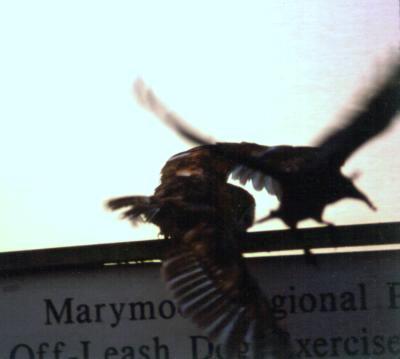 American Crow knocking the owl to the ground, May 23, 2001 Two photos were sequential shots while in auto-advance multi-exposure mode |
